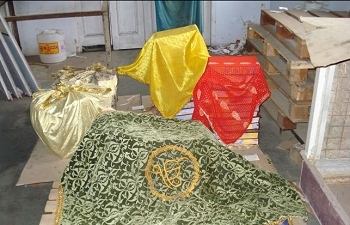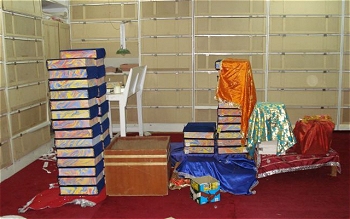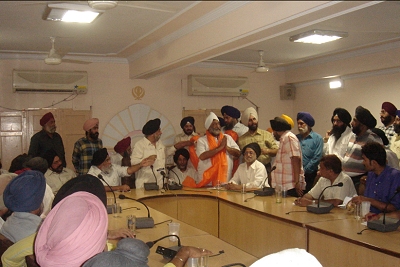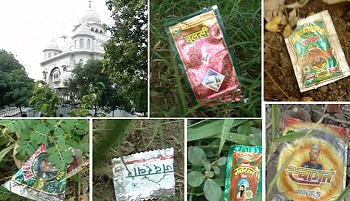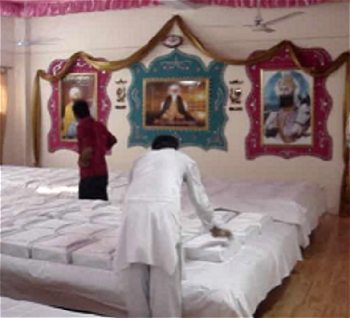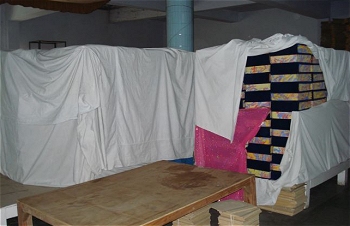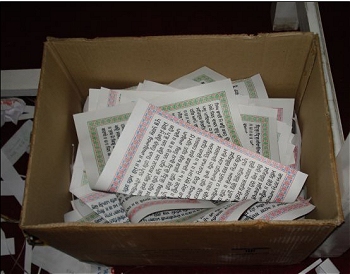 Not trying to steal the wind from the Greek sails but is there not another battle that is overlooked that is as heroic, if not even more uneven in its opposing sides, when 40 Sikhs at the battle of Chamkaur, fought the entire imperial army of the Moghul ruler Aurangzeb?
Not trying to steal the wind from the Greek sails but is there not another battle that is overlooked that is as heroic, if not even more uneven in its opposing sides, when 40 Sikhs at the battle of Chamkaur, fought the entire imperial army of the Moghul ruler Aurangzeb?In the Battle of Thermopylae of 480 BC an alliance of Greek city states fought the invading Persian Empire at the pass of Thermopylae in central
The performance of the defenders at the battle of
 A few points to note, it wasn’t at all a band of 300 Spartans surrounded by millions of Persians, the pass at Thermopylae is a small and narrow area where only a few hundred soldiers can fight at a time. The 300 were actually joined by 700 Thespians. With all due respect to the Persian and Greek armies, the Spartans cannot be given all of the credit. The Athenians burned the Persian fleet in the sea at
A few points to note, it wasn’t at all a band of 300 Spartans surrounded by millions of Persians, the pass at Thermopylae is a small and narrow area where only a few hundred soldiers can fight at a time. The 300 were actually joined by 700 Thespians. With all due respect to the Persian and Greek armies, the Spartans cannot be given all of the credit. The Athenians burned the Persian fleet in the sea at The date is December 1705 the combined armies of the Mughal empire and the treacherous Hill Rajas have besieged Anandpur Sahib. The Muslim generals are taking oaths of the Holy Quraan and the Pahari Hill Rajas on the oaths of Bhagwat Gita and the holy cow.
They implore Guru Gobind Singh Ji, for one time, leave Anandpur Sahib and that they will be given safe passage out. Though Guru Sahib Ji did not believe a word of it or any of their oaths or promises they decided to leave Anandpur Sahib due to the request of the Sikhs inside the fort.
The Guru along with forty of his followers crossed the river and arrived at a small clearing, they took shelter in an unsound small fort called 'Kachhi Garhi’ at Chamkaur. The enemy soon arrived and laid siege. This Gharhi was surrounded by 10 lakh soldiers of the enemy. No band of soldiers have ever faced such unfavorable odds, not even the Spartans. This was not narrow a passage to defend, this was a small shakey havali surrounded on all sides by the enemy baying for blood.
The two Sahibzadas - Baba Ajit Singh and Baba Jujhar Singh - and three other archers took up positions, along with Guru Gobind Singh Ji in the upper portion of the house. Eight persons each were deputed to guard each of the four sides. Two expert swordsmen -Bhai Madan Singh and Bhai Kotha Singh - stood to guard the only entrance to the haveli.
The battle lasted all day. When the ammunition and arrows in the garhi almost ran out, the Singhs came out in batches of five, with swords and spears in their hands, to face the enemy that far outnumbered them. Their determination and fighting skill helped them kill many of the enemy, but odds were so heavy against them that they all fell in the field, one by one. They were followed by the next batch of five, charged with emotions of fighting a treacherous enemy. Determined to fight with all their vigor, they too were to lay their lives the same way.
The two elder sons of Guru Ji - Baba Ajit Singh (17 years old) and Baba Jujhar Singh (15 years old) stepped forward and volunteered to go fight the hordes outside. The Great Guru was greatly impressed and prepared them himself for battle before sending them out to the field of battle to sacrifice their lives. Included in this band were three of the original Panj Piyaray (Five Beloved ones) Bhai Mohkam Singh, Bhai Himmat Singh and Bhai Sahib Singh.
Each Sikh went into battle with such ferocity, like a hungry lion scattering its prey that it unnerved the enemy, but the hordes overwhelmed them and they fought to the last breath. Such heroics have seldom been seen before or since. This situation brought true the prophecy of one of Guru Sahib Ji’s compositions :
"Call me Gobind Singh, only, when each of my Sikh will fight with more than one and a quarter lakh of enemy."
By the nightfall, only six persons - Guru Gobind Singh Ji, two of the “Beloved Five" (Bhai Daya Singh and Bhai Dharam Singh), Bhai Sant Singh, Bhai Man Singh and Sangat Singh remained alive in the garhi. The Singhs decided that Guru Gobind Singh must leave the haveli, so that he could rally his followers again. If he perished, loss to the community would be irreparable. Guru Ji wanted to face the enemy but the five Sikhs in the form of Panj Piyaray said that Guru Ji must do as they say, to which Guru Sahib Ji relented. It was proposed that Guru Sahib Ji should change his attire with Sangat Singh, who somewhat resembled him in stature. By his being visible, the others might get enough time to reach a somewhat safe distance. Reluctantly, the Guru agreed, to the propsal, which the Singhs presented as the matta of five, which was binding. . Bhai Sant Singh decided to stay back to guard the entrance, and thus gain some additional time, when the enemy barges in.
In the middle of the night Guru Gobind Singh and three remaining Sikhs - Bhai Daya Singh, Bhai Mohkam Singh and Bhai Man Singh - left the haveli, with a plan to go in different directions but meet in a garden outside Machhivara. Even at this critical moment Guru Ji was fearless and full of valor, clapping loudly three times and shouting “here goes the Guru of the Sikhs, face me now if you have the courage” and set off into the enemy hordes. Fighting their way through the enemy ranks Guru Ji made it out and headed towards Machiwara.
This whole incident is referred to in the historical document called Zafarnama, penned by Guru Gobind Singh himself. Notice that the figure of 10 Lakh enemy is refered to by Guru Sahib Ji giving more credence to this figure rather then it being a generic value.
Zafarnama –
How could forty famished persons fight in the battlefield, on whom ten lakh soldiers made a sudden attack.
Your army breaking the oath and in great haste plunged in the battlefield with arrows and guns.
For this reason, I had to intervene and had to come fully armed.
When all other methods fail, it is proper to hold the sword in hand.
The soldiers of your army, clad in black uniforms, rushed like flies on my men.26.
Whosoever from them came near the wall of the fort, with one arrow he wos drenched in his own blood.
When I saw Nahar Khan in the battlefield, he was greeted with one of my arrows.29.
All those boasters who came near the wall, they were dispatched in no time.
Khwaja Mardud hid himself behind the wall; he did not enter the field like a brave warrior.
If I had seen his face once, one of my arrows would have dispatched him to the abode of death.
Many warriors wounded with arrows and bullets died in the battle on both the sides.
The darts were showered so violently, that the field became red like popyflowers.
The heads and limbs of the dead were scattered in the field like the balls and sticks in the game of Polo.
When the arrows hissed and bows ti
 nkled, there was a great hue and cry in the world.
nkled, there was a great hue and cry in the world.There the spears and lances provided a dreadful sound and the warriors lost their senses.
How could bravery ultimately withstand in the field, when only forty were surrounded by innumerable warriors?
When the lamp of the world veiled itself, the moon shone in brightness during the night.
There was neither any harm nor injury; my Lord, the vanquisher of the enemies, brought me to safety.
